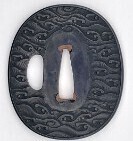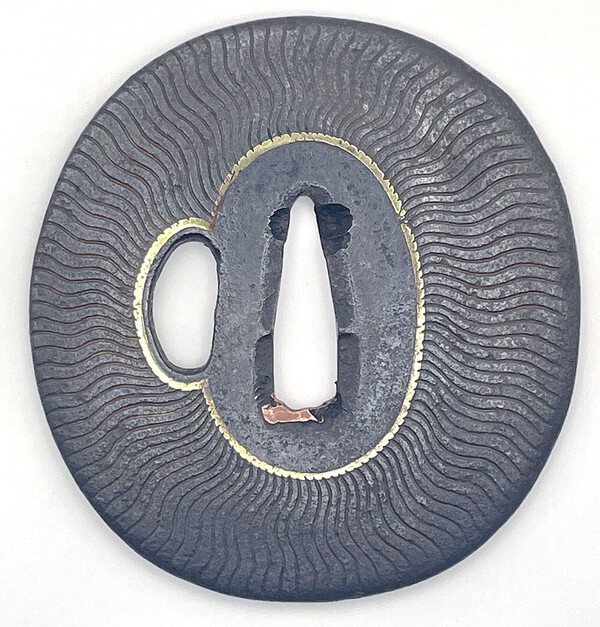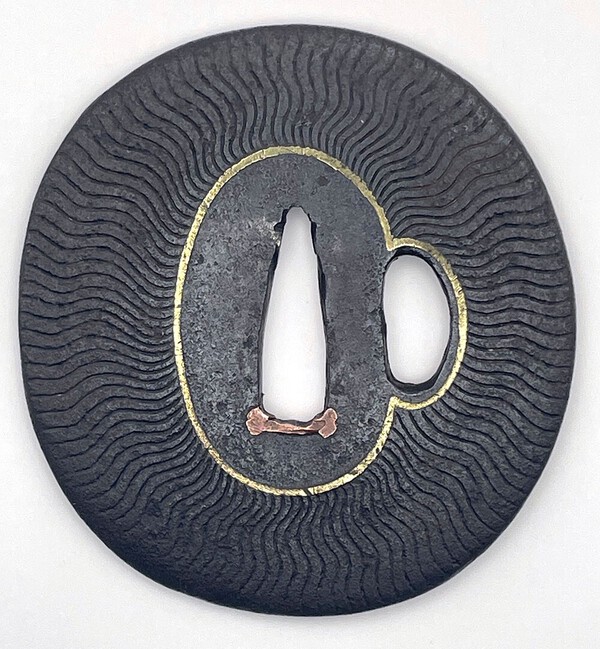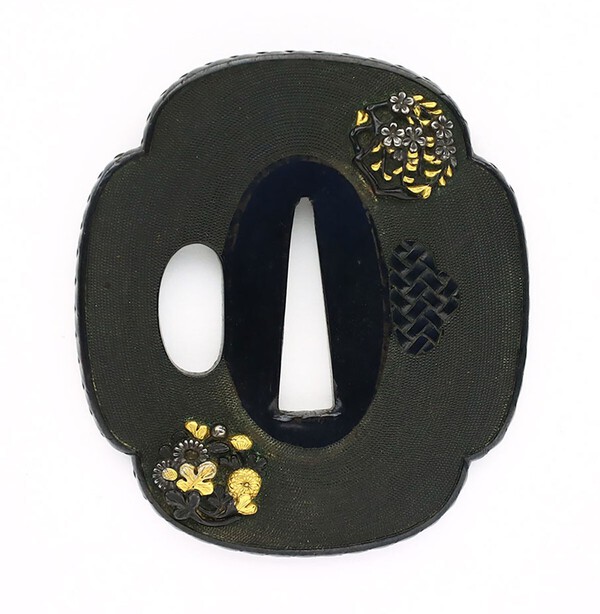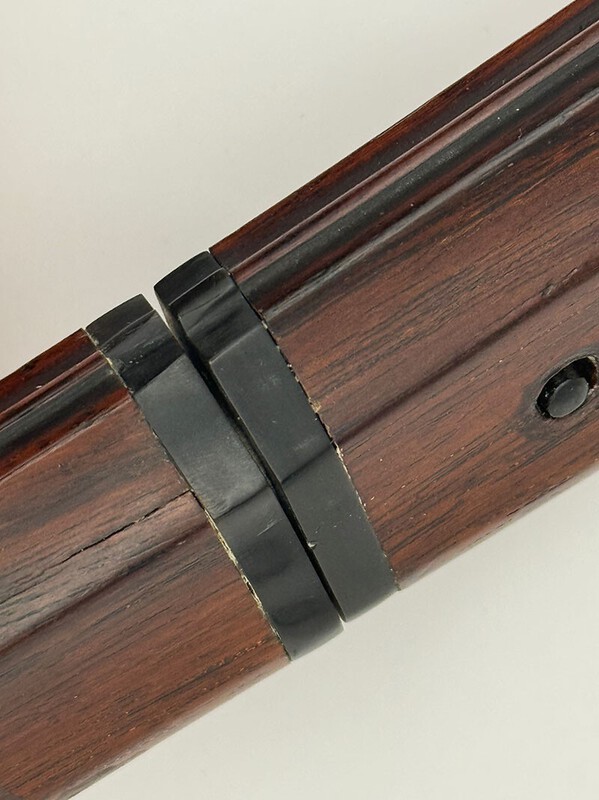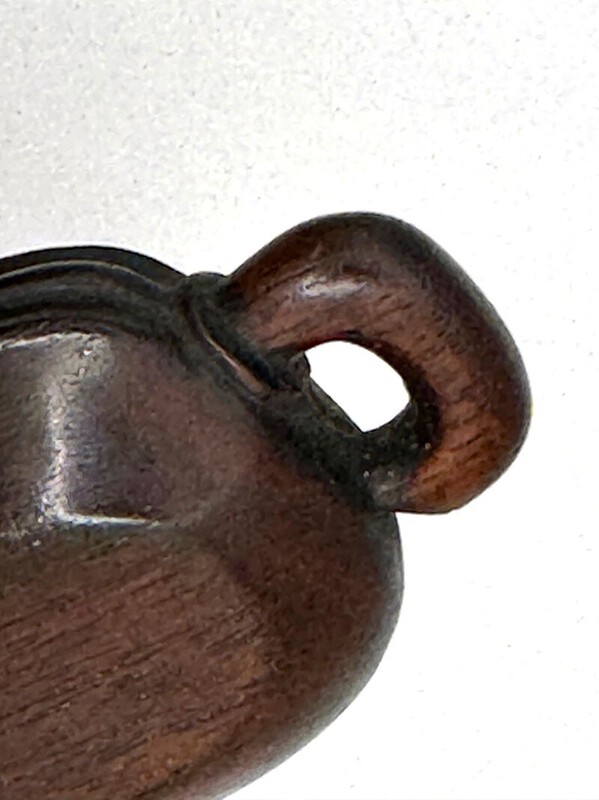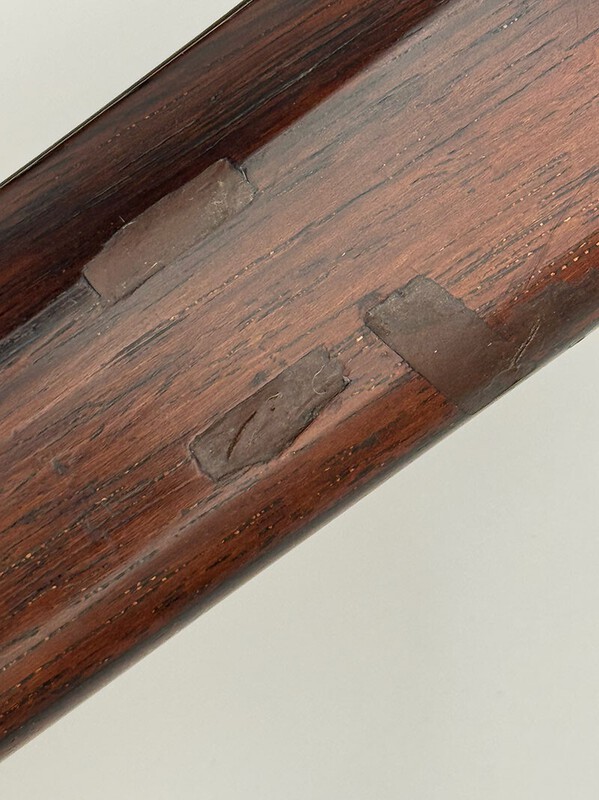-
Posts
146 -
Joined
-
Last visited
Everything posted by Jesta
-
Don't want to take this too far off-topic, but I was fascinated by the discussion of the tokei tsuba. I am agnostic about whether they are religious symbols, but I am still somewhat gobsmacked by how common they are, and why anyone would produce a tsuba with a clock gear on it. It just seems such a random design item…
-
This seems to be closer to the ones discussed here:
-
I was looking through the archives and read the thread on tokei tsuba. Do you think that they are Christian (Jesuit) or more likely to be Buddhist symbols? Or are they really just clock gears?
-
I would say absolutely… Fascinating to see overtly Christian iconography on a tsuba.
-
Thanks. I have seen wheels, halos, and possible Jesuit influences (tokei tsuba), but wondering how much this was a thing, and whether it was for design aesthetics or as some form of protective charm… On a side note: The comparison was strictly limited to people who wear armour and use swords… Christian symbols were often incorporated into these items, so I am interested in whether this was similar in Japan. FWIW: As far as I can tell the whole chivalric idea is pretty much bullshit retrospectively applied, in much the same way that Bushido was…
-
I recently picked this one up. It appears to be a stylised representation of the halo of the Amida Buddha. I am curious about the theme… Was this a common theme? Was it like the European knights having Christian imagery worked into their swords and armour as protective symbols? Given the wide variety of imagery from nature, legend, folklore, history etc on tsuba were there areas that specialised in religious themes? (This is connected to the current discussion started by iado dude on another thread)
-
I think that this might have similarities to ancient Greek and Roman sculptors who carved pieces fully in the round, even though the back would never be seen. It is to make the piece finished, and because the artist would know, even if the average viewer would not. The flowing lines flow under the seppa and out again, making it seem like the seppa is part of the art… My best intuition is that it is an artistic choice, a way of playing with the form, and being complete.
-
New hypothesis: This isn’t a tsuba at all. It is an early prototype of the shapes toy. The loops are to hold it while the child pushes shapes through the holes. It makes perfect sense now…
-
It’s not a pretty piece by any means, not delicate… I also struggle to understand why it has a loop on top and bottom (in one orientation). It might have been a tachi tsuba (or just possibly on a naginata) originally, so the wider guard would need to be rotated if it was fitted to a katana worn in the belt. But… it’s not so pretty that someone would feel that it was worth the time and effort. And… after you had rotated it the design would be marred by the ends of the spare nakago ana poking out asymmetrically. Not something I would want, but there is no accounting for taste.
-
I came across this one: https://thelanesarmo.../shop.php?code=16704 The blurb says that it has been designed to be fitted in two orientations. Has anyone seen any other examples like this? My first thought is that it would be hard to hide the alternative nakago ana whichever way you mounted it, unless the parts poking out from under the seppa were meant to look like a part of the design.
-
Thanks, appreciate the comparison. Always good to hear from others…
-
That was my thought… If it is for a wakizashi, then it might be a bit smaller than normal.
-
Yes, with NBTHK papers… Thanks for the example. It’s beautiful.
-
I have recently become quietly in love with nanako… This one is my latest, and I am still amazed by the quality of the workmanship that went into creating it. The tsuba is tiny, just 6.32 x 5.67cm (it fits comfortably inside the palm of my hand), shakudo decorated with flowers on a nanako ground, while the rim is made to look like plaited material (I think). The signature is Kono Yoshikuni. I was surprised by how small it was, and how delicate. My current hypothesis is that it was made for a child, or on a larger tanto. Any other similar examples or information would be appreciated.
-
Thanks, Dale. I hadn’t associated the cuts in the OP’s tsuba with this technique. I see what you mean now. I was working under the false impression that they had been hammered through, possibly because the corrosion had made the tops of the cut wider. Some of those very fine lines must have taken a serious amount of time and precision to get right. I remain hugely impressed with the effort put into creating tsuba.
-
(thanks Dale, for a really interesting take on this) I am really interested in why the design would be cut through the tsuba, rather than carved onto the faces. Are there other examples you can think of where this has happened? It strikes me that this would have been a hard thing to do, when compared to carving the design. That implies (if I am right) that the cutting through the metal was worth the time taken…
-
This one is listed as early Edo period, and seems to be reasonably large (8.09cm x 8.05cm): https://www.aoijapan...a-mumei-kacchushi-2/ Not as large as 10cm, but more than sufficient to guard your hands I would guess. Edit: I just found this one too:
-
Here you go... I didn't post the blade because this part of the forum is all about the tosogu... Apologies for the poor photography, I haven't figured out how to photograph shiny blades in my current set up, which is mostly for tsuba.
-
Thanks for the thoughtful reply. You could well be right that it isn't a shirasaya. The only issue I have with it is that the tsuka is not a comfortable hold, and the fit to the blade doesn't feel firm. I would not feel comfortable actually using the tanto in this koshirae. When it comes to the filler, I am not in a hurry. I will clean it out, but I lack the skills to make any replacement, so I shall probably just leave it as a testament to how it should have been...
-
I bought this tanto a while ago, and it came in this... well... is it a shirasaya? It is made to look like a bean pod, and is beautifully crafted. There is a loop on the end of the hilt that would suit a cord, and there apparently was a kurigata at some point (lost now, and filled with horrible wood filler that I will eventually clean out). Does anyone know anything about fittings like this? The tanto is an armour piercing blade, probably dating to the 17th century, so I don't think that these fittings are original to the blade.
-
-
Those are the ones I have been using too. I was just getting antsy about the sharp edges and points having an impact on the copper or shakudo tsuba (iron is not an issue). What I am doing now is to use a nail file to soften the edges and points so that they don't catch on the nanako on the rim, or press into the copper. I am probably being overly cautious, but I don't want to regret damaging things later.
-
Hi Stephen, Thank you for the really detailed answer. I have been looking for a reliable stand for a while now, one that is not super-expensive. I will give your design a try, and I really appreciate you making available.
-
I have been trying out plastic stands of different designs. I has recently become a bit worried about the sharp edges scratching or wearing the rims of copper tsuba. Do you have any trouble with that? I haven't experimented, but I am interested to know if the softer metal might get rubbed or scratched by hard edges on a plastic stand. I am particularly concerned with nanako designs...
-
My 2 cents: 1. Buy what you like to look at. I collect pieces that I enjoy seeing every day. 2. Buy from reputable sources (there are links to various places in the forum) at the start. You will be less likely to buy a dud from a well-reviewed dealer. 3. Avoid eBay until you are very, very good at spotting fakes. 4. Accept that you will make a few mistakes, and if they are pretty enough it won't matter too much. (see my thread on the fake one that I bought) 5. Buy selectively (unless you have vast sums of money lying around). It is very easy to spend on tsuba, there are soooo many, and many are sooo desirable (speaking for a friend, of course) 6. Personally, I prefer to spend a bit more and get them with NBTHK papers where possible, but if you follow #2 (above) it probably isn't really necessary, and it can cost more. 7. Buy the ones that you will enjoy every day. Cheap or expensive, signed or unsigned, papered or not, just get the ones that you love looking at. (I know that this is repeated, but I think that it is key)


